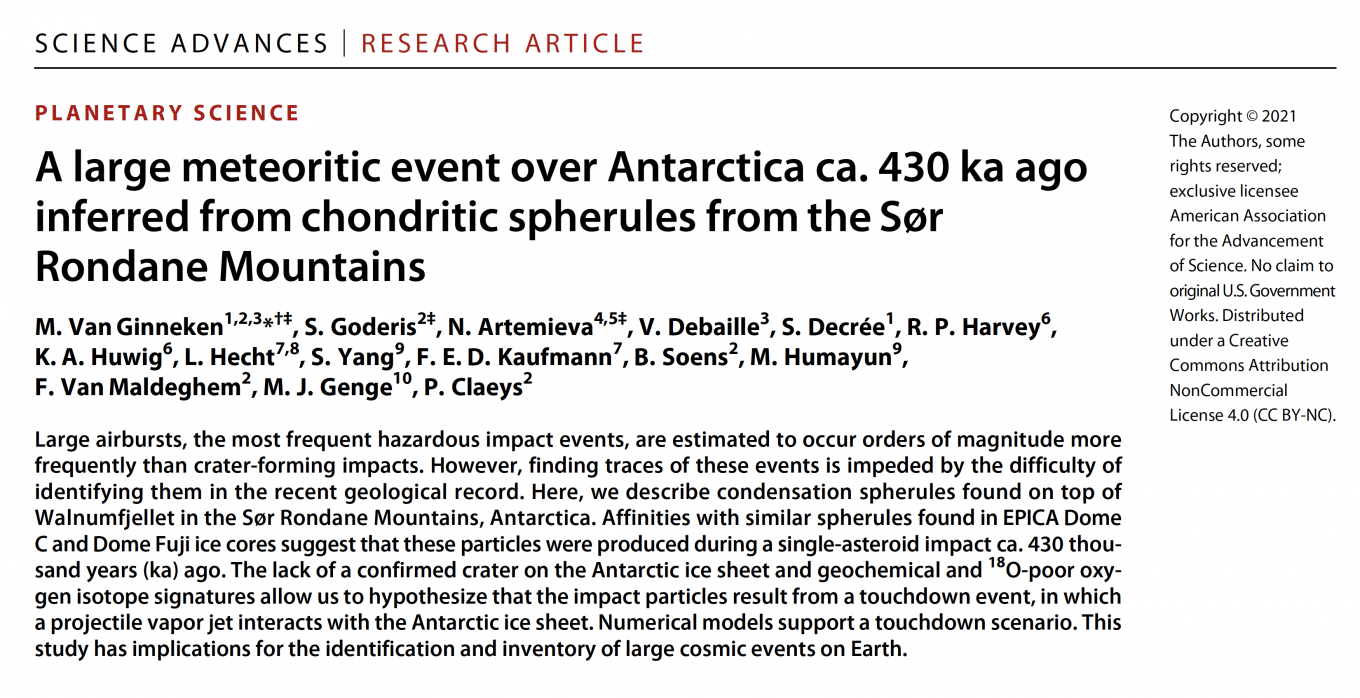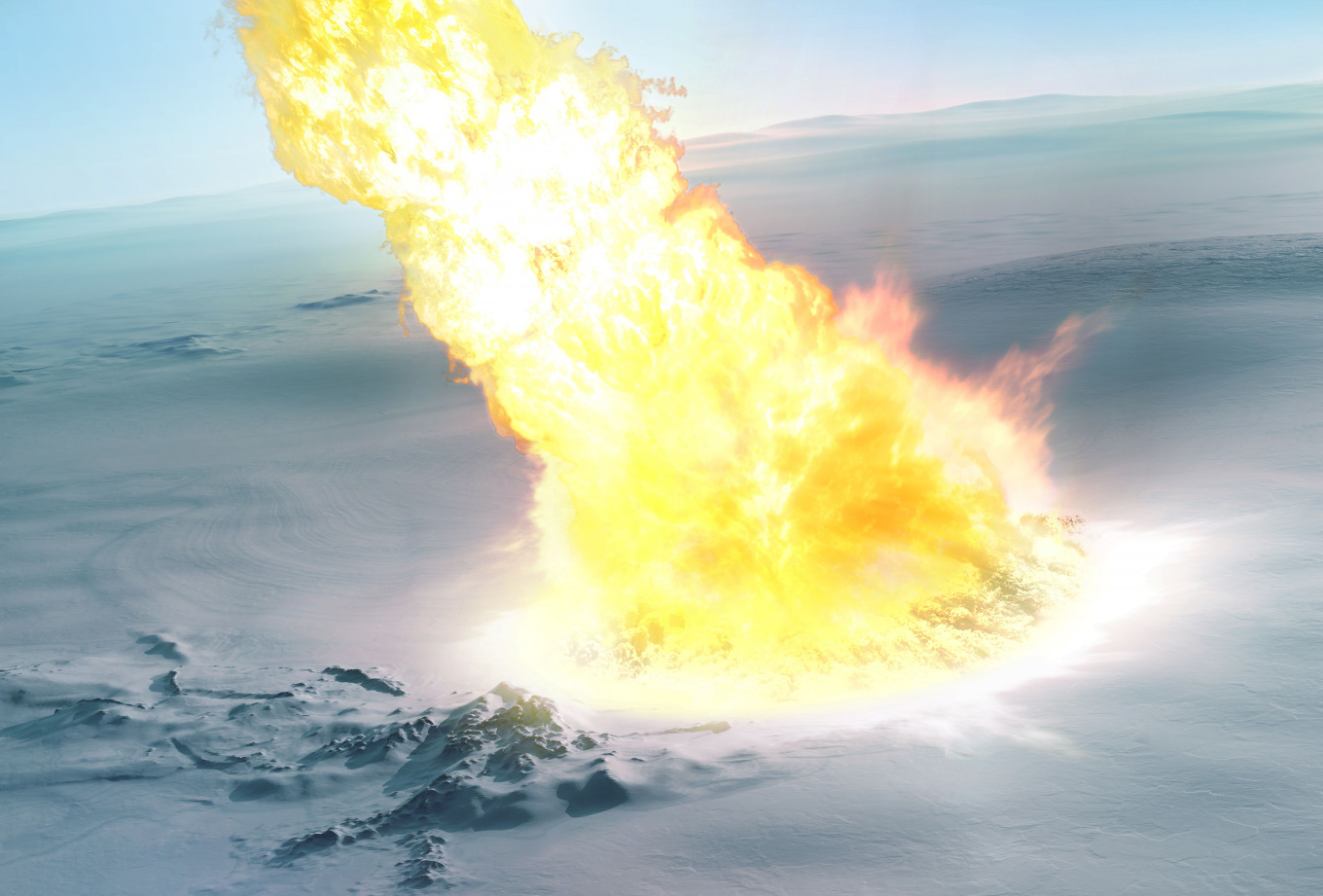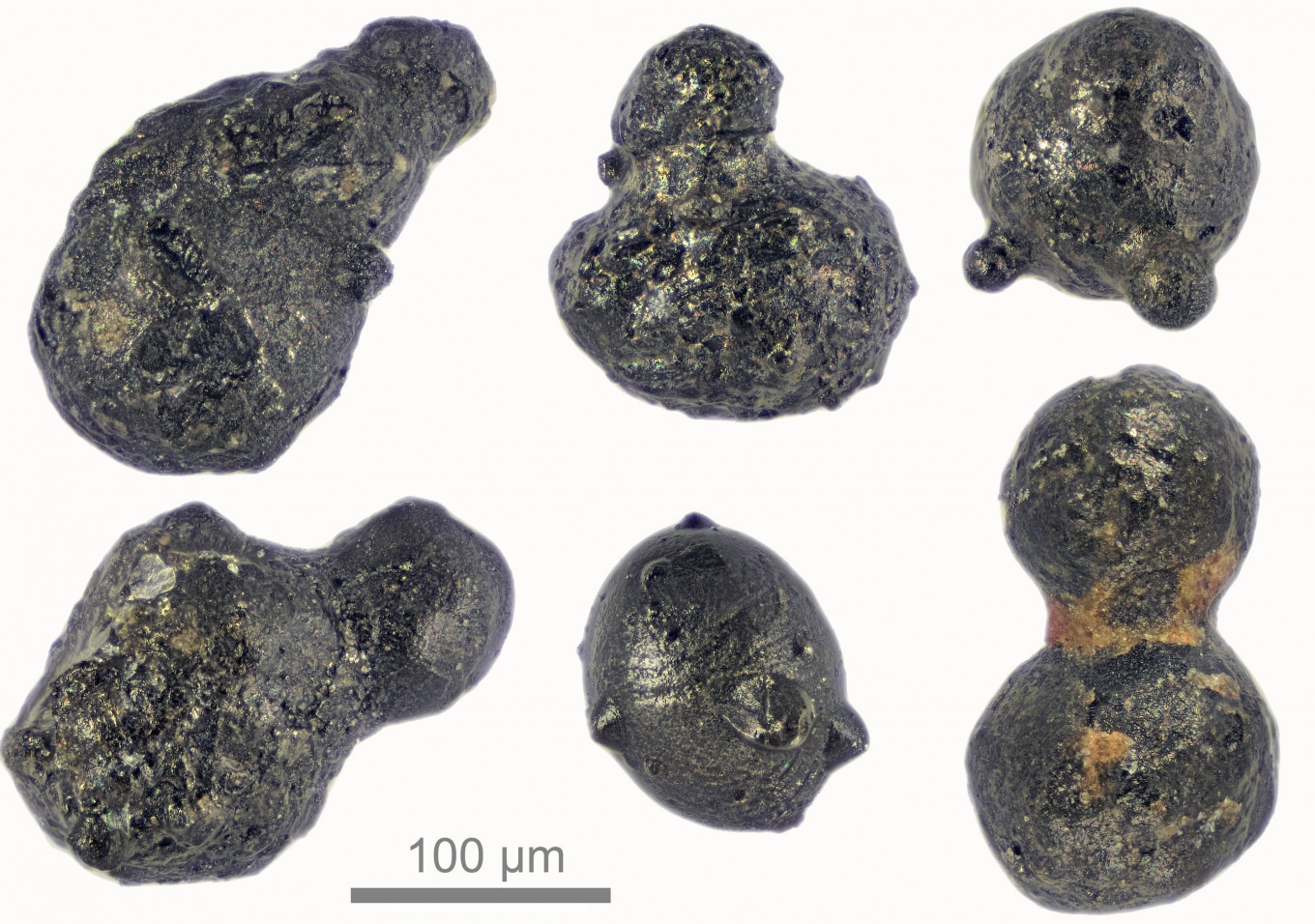New Science Advances paper gets international press coverage

Matthias Van Ginneken, now a research at the University of Kent in Canterbury and Steven Goderis from AMGC describe the first strong evidence for the discovery of a large airburst over Antarctica some 430 thousand years ago. Such large airbursts should occur rather frequently as a meteorite explodes in the Earth atmosphere, but are rarely reported. The paper illustrates condensation spherules discovered in the Sør Rondane Mountains of East Antarctica; which, based on their oxygen isotopic signature, seem to have come in contact with Antarctica ice. Their formation, - supported by numerical modeling -, results most likely from a touchdown event, in which a jet full of projectile vapor interacts with the ice sheet.
Read the paper here and check out VUB Today for a summary.
The paper published in Science Advances received a large international press coverage, CNN; National Geographic; BBC; Brussels Times; RTBF; VRT news; Het Nieuwsblad; Sciencenews ... (altmetric)
Touchdown impact generated by the explosion of a projectile (± 100 to 150 m in diameter) in the Earth atmosphere; this is much larger than the Tunguska event in Siberia in 1908

Group photo of the condensation spherules that interacted with Antarctica ice based on their oxygen isotopic composition
